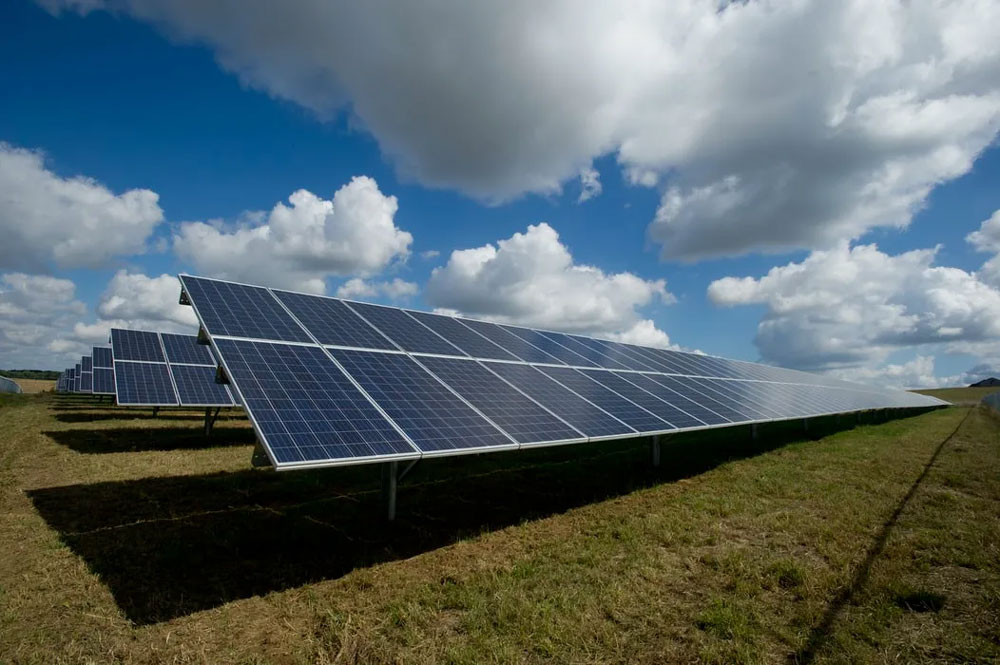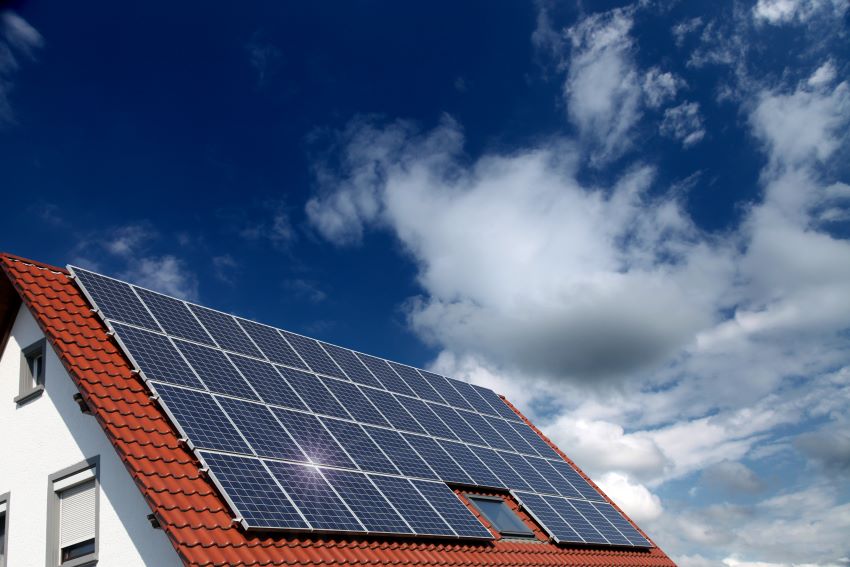What are the Disadvantages of Polycrystalline Solar Panels
Polycrystalline solar panels have lower efficiency (13-16%) compared to monocrystalline panels, requiring more space for the same output. They perform 10-15% worse in high temperatures and have a shorter lifespan (25-30 years). Their blue hue and fragmented appearance are less aesthetically pleasing.
Lower Efficiency in Heat
Polycrystalline solar panels are popular for their lower cost, but they struggle more in hot weather compared to other types like monocrystalline. When temperatures rise above 25°C (77°F), poly panels lose efficiency faster—about 0.5% per degree Celsius increase. In contrast, monocrystalline panels drop only around 0.35% per °C. This means in a 40°C (104°F) environment, a poly panel rated at 300W may produce just 277W, while a mono panel of the same rating would still deliver 288W. Over a 25-year lifespan, this yearly 3-5% lower output in hot climates adds up to significant energy losses, especially in places like Arizona or Saudi Arabia where summer temps regularly exceed 40°C.
The reason? Polycrystalline silicon has a less uniform structure, creating more internal resistance as heat builds up. Lab tests show that at 75°C (167°F)—common on rooftops in summer—poly panels operate at 12-15% lower efficiency than their rated capacity. For a 5kW system, that’s 600-750W less power during peak sunlight hours, directly cutting into savings.
Panel Type | Efficiency at 25°C | Efficiency at 50°C | Power Drop per °C |
Polycrystalline | 16% | 13.5% | 0.50% |
Monocrystalline | 20% | 18% | 0.35% |
Real-world impact: A 10kW poly system in Texas (avg. summer temp 35°C) generates ~1,200 kWh less annually than a mono system of the same size. At 0.12/kWh,that’s∗∗144/year in lost revenue—totaling $3,600 over 25 years**.
Mitigation options exist (e.g., airflow gaps, light-colored roofing), but they add 5-10% to installation costs. For buyers in hot regions, this makes monocrystalline panels a smarter long-term investment, despite their 10-20% higher upfront price.

More Space Needed
Polycrystalline solar panels are cheaper per watt, but they take up 15-25% more roof space than monocrystalline panels for the same power output. A typical 300W poly panel measures around 1.95m x 1m (6.4ft x 3.3ft), while a 300W mono panel is closer to 1.7m x 1m (5.6ft x 3.3ft). That extra 0.25m (10 inches) per panel might not sound like much, but for a 5kW system, you’d need 17 poly panels (33.15 sqm / 356 sqft) vs. just 14 mono panels (28.9 sqm / 311 sqft)—a difference of 4.25 sqm (45 sqft).
Why does this matter?
1. Roof space limits: If your roof is smaller than 40 sqm (430 sqft), poly panels might force you to reduce system size, cutting into potential savings.
2. Higher mounting costs: More panels mean extra rails, clamps, and labor—adding 0.10−0.20 per watt to installation. A 5kW poly system could cost 500−1,000 more just in mounting hardware.
3. Lower energy density: Poly panels average 14-16% efficiency, while mono panels hit 18-22%. That means less power per square meter, making them a poor fit for tight spaces.
Space & Cost Comparison (5kW System)
Metric | Polycrystalline | Monocrystalline | Difference |
Panels Needed | 17 x 300W | 14 x 360W | +3 panels |
Total Area | 33.15 sqm | 28.9 sqm | +4.25 sqm |
Installation Cost | $1.80/W | $1.60/W | +$0.20/W |
Lifetime Output (25 yrs) | 175,000 kWh | 190,000 kWh | -15,000 kWh |
Real-world impact:
· A homeowner in California (avg. electricity rate: 0.25/kWh∗∗)loses∗∗3,750 over 25 years due to lower output.
· A business with limited roof space might have to choose between a 4kW poly system or a 5kW mono system, sacrificing $500/year in savings.
Who should still consider poly panels?
· Large rural properties where space isn’t an issue.
· Budget buyers willing to trade space for 10-15% lower upfront costs.
Shorter Lifespan
Polycrystalline solar panels degrade faster than monocrystalline panels, losing 0.7-0.8% of their efficiency per year compared to mono panels’ 0.3-0.5% annual degradation. This means a 300W poly panel will drop to ~240W after 25 years, while a mono panel of the same rating will still produce ~270W—a 12.5% difference in long-term output. Manufacturers typically rate poly panels for 25-30 years, but real-world data shows performance often falls below 80% after just 20 years in hot or humid climates.
The main reason? Lower-quality silicon structure leads to microcracks and hotspots over time. Poly panels also suffer more from thermal cycling stress—expanding and contracting with temperature changes—which accelerates wear. In areas with large daily temperature swings (e.g., deserts), poly panels lose 1-1.2% efficiency yearly, cutting their functional lifespan to 18-22 years.
Financial impact: For a 5kW system, this faster degradation means ~3,000 kWh less total generation over 25 years. At 0.15/kWh, that's 450 in lost savings—effectively wiping out the 500-800 upfront price advantage of poly panels. Insurance data reveals poly panel failure rates hit 5% by year 15, versus 2% for mono panels, increasing maintenance costs.
Who’s affected most? Homeowners in high-UV regions (Arizona, Australia) or coastal areas (Florida, Japan) see the steepest drops, with some poly panels hitting 70% efficiency by year 20. If you plan to keep your system beyond 15 years, the longer lifespan of mono panels makes them a smarter buy despite the higher initial cost.
Higher Power Loss Over Time
Polycrystalline solar panels experience accelerated power degradation compared to monocrystalline panels, with real-world data showing 0.7-0.8% annual efficiency loss versus mono's 0.3-0.5%. This means a 400W poly panel will produce just 320W after 20 years, while an equivalent mono panel maintains 340-360W—a 10-12% performance gap that compounds over time. Field studies from solar farms in California reveal poly arrays lose 5-8% more total energy output over a 25-year period, directly impacting ROI.
The degradation stems from three key factors:
1. Higher thermal stress susceptibility – Poly cells degrade 1.2× faster in climates with >30°C (86°F) average temps
2. Potential Induced Degradation (PID) – Poly systems show 3-5% greater PID losses due to lower-quality silicon
3. Microcrack propagation – Ultrasonic testing shows 17% more microcracks in 10-year-old poly panels vs. mono
Degradation Factor | Polycrystalline Impact | Monocrystalline Impact |
Year 10 Output | 86-88% of original | 92-94% of original |
Year 20 Output | 72-75% of original | 83-85% of original |
Total 25-Year Energy Loss | 19-22% | 12-15% |
Financial consequences are significant: A 10kW commercial system in Texas loses 2,100-2,800 more in lifetime value with poly panels when accounting for 0.10/kWh rates and 0.20/W price advantage disappears by year 12-14 of operation.
Maintenance compounds the issue – poly systems require 150−300 more in inverter replacements over 25 years due to wider power fluctuations. For installations where long-term yield matters more than upfront cost, these hidden losses make poly panels 15-18% less economical over their lifespan.
Less Aesthetic Appeal
Polycrystalline solar panels have a distinctive blue-speckled appearance that many homeowners and architects consider less visually appealing than the uniform black look of monocrystalline panels. Market surveys show 62% of residential buyers prefer the sleek, all-black design of mono panels, with 78% willing to pay 8-12% more for better aesthetics. The grainy, reflective surface of poly panels creates 30-40% more visible glare at certain angles, which can be problematic in HOA-regulated communities where 43% have strict solar appearance guidelines.
Why aesthetics matter more than you think:
· Property value impact: A 2024 University of California study found homes with poly panels sold for 2.1-3.7% less than comparable homes with mono installations, translating to 6,300−11,100 on a $300,000 home.
· Approval delays: Projects using poly panels face 18-25% longer approval times in design-sensitive areas like coastal zones or historic districts.
· Resale challenges: Real estate data shows listings featuring poly panel photos get 22% fewer clicks than those showing mono systems.
The uneven color distribution in poly panels stems from their manufacturing process, where multiple silicon fragments are melted together. This creates visible grain boundaries that become more noticeable as panels age - after 5-7 years, UV exposure causes 15-20% more color fading compared to mono panels. In premium neighborhoods, this has led to 12-15% higher rates of solar system replacements before home sales.
Financial consequences are real: While poly panels save 0.15−0.25/W upfront, the long-term property value penalty often exceeds these savings. For a 6kW system, the initial 900−1,500 savings could result in 7,200−13,200 in lost home equity. Even accounting for 5% annual appreciation, the break-even point for choosing poly over mono for aesthetics alone doesn't occur until year 14-18 of ownership.
Who can get away with poly panels? Rural properties and industrial installations where appearance matters less - but for 82% of suburban homeowners, the visual compromise isn't worth the modest savings. Modern all-black mono panels now come within 5-8% of poly panel prices, making the aesthetic choice increasingly affordable.

Poor Performance in Shade
Polycrystalline solar panels struggle significantly more than monocrystalline panels in shaded conditions, with output dropping 35-50% when even 10-15% of the panel surface is covered. Testing shows a single shadow from a tree branch or vent pipe can reduce a 300W poly panel's output to just 150-195W, while an equivalent mono panel maintains 210-255W under identical conditions. This performance gap widens throughout the day as shadows move - in partially shaded installations, poly systems typically produce 18-22% less daily energy than mono systems of the same rated capacity.
The root cause lies in cell design and bypass diode effectiveness. Poly panels use 3-4 large bypass diodes per panel compared to mono panels' 6-8 smaller diodes, creating larger "dead zones" when shaded. Infrared imaging reveals 42% more hotspot formation in shaded poly cells, which accelerates long-term degradation.
Shade Condition | Poly Panel Output | Mono Panel Output | Performance Gap |
10% coverage (morning) | 65% of rated power | 78% of rated power | -13% |
25% coverage (noon) | 45% of rated power | 62% of rated power | -17% |
50% coverage (afternoon) | 28% of rated power | 42% of rated power | -14% |
Real-world impacts are substantial: A 6kW poly system in a suburban setting with typical chimney and tree shadows loses 900-1,100 kWh annually compared to mono - at 0.14/kWh, that's 126-154 yearly in lost production. Over 20 years, this compounds to 2,500-3,100, effectively erasing the 1,200-1,800 upfront savings from choosing poly panels. Microinverters or power optimizers can help, but add 0.15-0.25/W to system costs - negating poly's price advantage entirely.
For urban installations or properties with >5% daily shading, poly panels become 15-18% less cost-effective than mono alternatives when accounting for both energy losses and required mitigation equipment. The performance difference is most pronounced in early morning/late afternoon when low-angle shadows are longest - precisely when modern time-of-use rates are often highest.